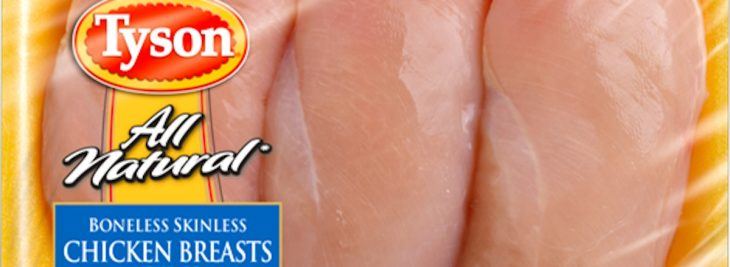$84 million in Tennessee poultry plant an effort by Tyson Foods to boost supply, hold market share
by August 16, 2017 1:59 pm 474 views

Tyson Foods announced plans Wednesday (Aug. 16) to invest $84 million into its Union City, Tenn., poultry complex to boost chicken supply that’s sold into food service. The expansion will begin this fall, creating 300 jobs over the next two years.
The expansion plan calls for additional processing lines, upgrades to the supporting operations at the hatchery, feed mill and transportation. There will be about 25,000 new square feet added to the plant and the extra capacity will create opportunities for more chicken growers as roughly 200 additional poultry houses will need to be constructed. Union City is in the northwest corner of Tennessee near the Kentucky border.
“Customer and consumer demand for protein, especially chicken, is increasing so we’re investing in projects that build on our strengths, expand our capabilities and increase our capacity,” said Doug Ramsey, group president of poultry. “Expansions like this position us to grow and support our customers.”
Ramsey encouraged independent farmers located in the area who want to become Tyson growers to seek out those opportunities on the company’s website.
Tyson Foods CEO Tom Hayes recently said the company would expand capacity in its chicken segment to meet retail and wholesale demand driven by increasing restaurant traffic. He said Tyson was under capacity in some areas and the company would invest to change that.
The $136 million poultry expansion in Green Forest, Ark., is expected to be complete in the next couple months, but Hayes said all that added capacity is already sold. The expansion in Green Forest added 200,000 square feet with additional lines of partially cooked chicken sold to retailers and into food service.
A late 2016 report by Rabobank indicates consumers are increasing chicken consumption, eating nearly twice the amount of chicken as pork and beef. Average per capita chicken consumption is around 89 pounds per year, compared with 54 pounds of beef and 50 pounds of pork. This chicken consumption is growing in ready-to-eat products bought in grocery store deli’s, frozen fully and partially cooked chicken sold in retail and food service.
Agronomists say beef consumption increased at the expense of pork and turkey, but not chicken. With demand for chicken growing, Tyson runs the risk of losing market share to its competitor Pilgrim’s. Pilgrim’s CEO Bill Lovette said recently that demand for chicken has been strong at retail through late spring until now. Over the past couple of years Pilgrim’s has invested to increase its own capacity in certain product areas to try and grow market share while also reaping higher overall prices because of the imbalance in supply and demand. He said demand for small birds remains robust which is somewhat constrained by the supply which had not increased materially over the past 10 years.
“With increasing demand for, especially the retail deli, wads, the rotisserie, fully cooked birds and the cut-up birds as well as bonus from small birds we’re continuously pricing very, very strong,” Lovette said.
Pilgrim’s also reported a 6% increase in the volume of chicken it produced in the U.S. last quarter. Tyson Foods’ chicken volume grew just 1.6% in the quarter.
